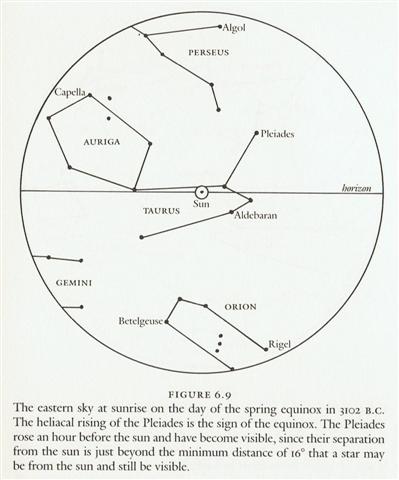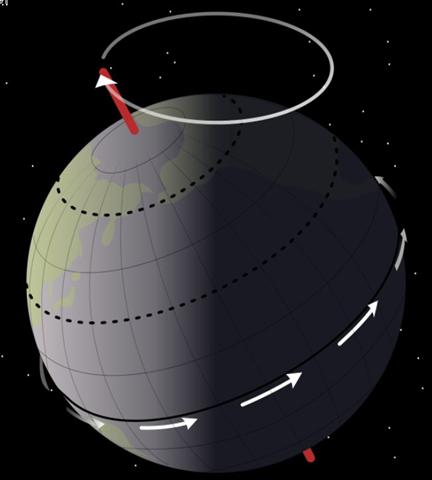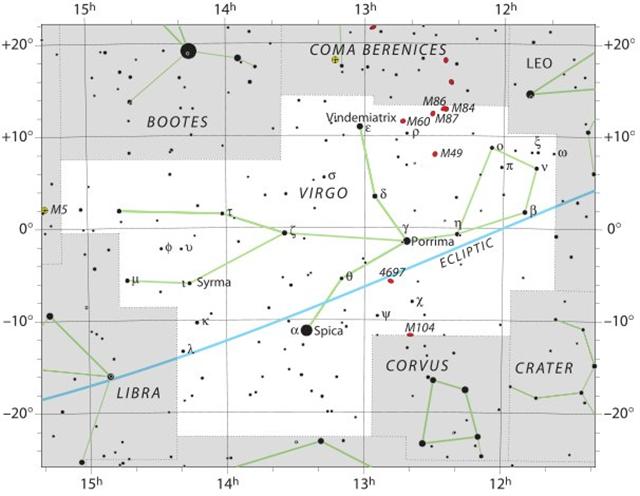445. In order to secure our map of the C text we
should now reiterate some of the basic steps.
First - and like an axiom - was my assumption that the Full
Moon gave the Easter Islanders an opportunity to use the
heliacal calendar which once upon a time may have originated
from somewhere north of the equator.
...
In each of
the Nakshatras there is a 'yoga', a key
star that marks a station taken by the moon in its
monthly (twenty-seven- or twenty-eight-day course)
through the stars. (The sidereal period of the moon,
twenty-seven days and a fraction , should be
distinguished from the synodic, or phase-shift period of
29.5 days, which is the ultimate antecedent of our month.)
In ancient times the priest-astronomers (Brahmans)
determined the recurrence of the solstices and equinoxes
by the use of the gnomon. Later they developed the
Nakshatra system of star reference to determine the
recurrence of the seasons, much as the Greeks used the
heliacal rising of some star for the same purpose.
An
example of the operation of the Nakshatra system
in antiquity can be seen in figure 6.9

Here we see
that the spring equinox occurred when the sun was at its
closest approach to the star Aldebaran (called Rohini
by the Hindus) in our constellation Taurus. But, of
course, the phenomenon would not have been visible
because the star is too close to the sun for
observation. The astronomers would have known, however,
that the equinoctial point was at Aldebaran by
observing the full moon falling near the expected date
or near a point in the sky exactly opposite Aldebaran
(since the full moon is 180º from the sun), that is,
near the star Antares ...
Sirrah
(α Andromedae) was at the time of rongorongo at 0h (March 21, day 80 counted from January 1).
It was at a corner (zaniah) of the Pegasus Square and could be
regarded as day zero for people living in the northern
hemisphere. Half a year later an observer on Easter
Island would see the Full Moon at the right ascension
line of Sirrah, i.e. in day 80 + 183 = 263 (September
20). Although η Virginis
(another corner) rose heliacally 185 days later at the September equinox.
The Sun was always at the opposite side of the
year compared to the Full Moon and therefore his
position should be in March 21 (263 - 183 = 80 = 265 -
185). When
the Full Moon was at Sirrah the date shoud be March 21.
|
no glyph |
koia |
ki te hoea |
ki te henua |
te rima te hau tea |
haga i te mea ke |
ki te henua - tagata
honui |
 |
 |
 |
 |
 |
 |
|
Ca1-1 |
Ca1-2 |
Ca1-3 (121 - 118) |
Ca1-4 |
Ca1-5 |
Ca1-6 |
|
Sept 20
(263) |
21 |
Equinox |
23 |
24 (☼183) |
25 (*5 +
*183) |
26 (☼185) |
|
"Aug 10 (222) |
11 |
12 (265 - 41) |
13 (15 * 15) |
14 |
(227 = 268 - 41) |
16 (*148) |
|
CLOSE TO THE FULL MOON: |
|
March 21 (80) |
22 |
23 |
24 |
25 (84) |
26 |
27 |
|
Al Fargh al Thāni-25 (Rear Spout)
0h (365.25)
CAPH (Hand) =
β
Cassiopeiae,
SIRRAH (Navel of the Horse) =
α
Andromedae
(0.5),
ε
Phoenicis,
γ³
Oct.
(0.8) |
Uttara Bhādrapadā-27 (2nd of the Blessed
Feet) /
Wall-14 (Porcupine)
ο Oct. (1.3),
ALGENIB PEGASI = γ Pegasi
(1.8) |
χ Pegasi (2.1), θ Andromedae (2.7) |
σ Andromedae (3.0), ι Ceti (3.3), ζ
Tucanae (3.5), ρ Andromedae, π Tucanae
(3.7) |
no star listed (4) |
ANKAA = α Phoenicis,
κ Phoenicis (5.0)
ALPHARD (α
Hydrae)
|
λ Phoenicis (6.3), β Tucanae (6.4) |
|
CLOSE TO THE SUN: |
|
ALCHITA = α Corvi,
MA WEI (Tail of the Horse) = δ Centauri
(183.1),
MINKAR = ε Corvi
(183.7), ρ Centauri (183.9) |
PÁLIDA (Pale) =
δ
Crucis
(184.6),
MEGREZ (Root of the Tail) =
δ
Ursae Majoris
(184.9) |
Hasta-13 (Hand) /
Chariot-28 (Worm)
GIENAH (Wing) =
γ
Corvi
(185.1),
ε
Muscae (185.2),
ζ
Crucis (185.4),
ZANIAH (Corner) = η Virginis
(185.9)
*144.0 = *185.4 - *41.4 |
CHANG SHA (Long Sand-bank) = ζ Corvi
(186.3) |
INTROMETIDA (Inserted) =
ε
Crucis
(187.4),
ACRUX =
α
Crucis
(187.5)
*146.0 = *187.4 - *41.4 |
γ
Com. Berenicis (188.0),
σ
Centauri (188.1),
ALGORAB =
δ
Corvi
(188.5),
GACRUX =
γ
Crucis
(188.7) |
γ
Muscae (189.0),
AVIS SATYRA (Bird of the
Satyrs) =
η
Corvi
(189.3),
ASTERION (Starry) =
β
Canum Ven.
(189.5),
KRAZ = β Corvi,
κ Draconis (189.7) |

... Raven gazed up and down the beach.
It was pretty, but lifeless. There was
no one about to upset, or play tricks
upon. Raven sighed. He crossed his wings
behind him and strutted up and down the
sand, his shiny head cocked, his sharp
eyes and ears alert for any unusual
sight or sound. The mountains and the
sea, the sky now ablaze with the sun by
day and the moon and stars he had placed
there, it was all pretty, but lifeless.
Finally Raven cried out to the empty sky
with a loud exasperated cry. And before
the echoes of his cry faded from the
shore, he heard a muffled squeak. He
looked up and down the beach for its
source and saw nothing. He strutted back
and and forth, once, twice, three times
and still saw nothing. Then he spied a
flash of white in the sand. There, half
buried in the sand was a giant
clamshell. As his shadow fell upon it,
he heard another muffled squeak. Peering
down into the opening between the halves
of the shell, he saw it was full of tiny
creatures, cowering in fear at his
shadow ... |
I have also assumed each glyph
should correspond to a right ascension day - my invention for
translating the diurnal right ascension hours, minutes, and seconds, into a pattern
more suitable for the cycle of the year. This means
there will be 392 (side a of the C tablet) + 348 (side
b) = 740 right ascension days covered by the glyphs.
Which could be explained for instance as 392 = 365 + 27
(the precessional depth down to Julius Caesar) with 348 = 364
- 16 (the minimum number of days before a star would return
to visibility after its close encounter with the Sun).
... Dieffenbach, in his 'Travels in New Zealand',
mentions that a title or appellation of the chiefs there
was Taki o te Wenua, and explains it to mean 'the
root of the land'. As the New Zealanders also came from
the Samoan group, it seems as if what once was a
national appellation, in course of time became the title
of a chief. If Diffenbach's interpretation of the title
is correct, it corresponds to the Hawiian Kumu-honua,
the name of the first man. The same author also
mentions, p. 67, a place where chiefs go after death,
and says it is called Taki-wana ... when a chief
dies he first goes to Taki-wana, where his left
eye remains and becomes a star ...
... The eye is the symbolic site of subjection. Valeri
observes that: 'The two sentiments that permit the
transcendence of the self are, according to Hawaiians,
desire and respect. One and the other are called kau
ka maka, literally, 'to set one's eyes on' ... 'To
see' (ike) in Hawaiian (as in French or English)
is 'to understand', but it is also 'to know sexually'.
Witness to the order, the world of forms generated by
the chief, the eye, is the sacrifice of those who
violate that order. The left eye of the slain
tabu-transgressors is swallowed by Kahoali'i,
ceremonial double of the king and living god of his
sacrificial rites. Like the sun, chiefs of the highest
tabus - those who are called 'gods', 'fire', 'heat', and
'raging blazes' - cannot be gazed directly upon without
injury. The lowly commoner prostrates before them face
to the ground, the position assumed by victims on the
platforms of human sacrifice. Such a one is called
makawela, 'burnt eyes' ...
From my assumed beginning of the text in
September 21 (264 = 364 - 100) to te maitaki (good) according
to Metoro Tau'a Ure at Ca3-22, we should
therefore arrive at Cujam marking the Club of Hercules
in right ascension day *183 (Alchita) + *73 = *256 =
December 2 (336 = 80 + 256 = 4 * 84 = 48 weeks).
|
JAN 31 |
FEBR 1 (32 = 73 - 41) |
2 |
3 |
4 (115 - 80) |
 |
 |
 |
 |
 |
|
Ca3-21 (→ March 21 → Gregorian equinox) |
Ca3-22 (73) |
Ca3-23 |
Ca3-24 |
Ca3-25 (→
March 25→ Julian equinox) |
|
tagata tuu rima ki
ruga |
te maitaki |
te henua |
Rei hata ia |
tagata rogo |
|
Hata.
1. Table,
bureau. P Pau.: afata, a chest,
box. Mgv.: avata, a box, case,
trunk, coffin. Mq.: fata, hata,
a piece of wood with several branches
serving as a rack, space, to ramify, to
branch; fataá, hataá,
stage, step, shelf. Ta.: fata,
scaffold, altar. 2. Hakahata, to
disjoint; hakahatahata, to
loosen, to stretch. P Pau.: vata,
an interval, interstice. Mgv.: kohata,
the space between two boards, to be
badly joined; akakohata, to leave
a space between two bodies badly joined;
hakahata, to be large, broad,
wide, spacious, far off. Mq.:
hatahata, fatafata, having
chinks, not tightly closed, disjointed.
Ta.: fatafata, open. 3.
Hatahata, calm, loose, prolix, vast.
Mgv.: hatahara, broad, wide,
spacious, at one's ease. Ta.:
fatafata, free from care. Mq.:
hatahata, empty, open. 4.
Hatahata, tube, pipe, funnel.
Churchill. Sa.: fata, a raised
house in which to store yams, a shelf, a
handbarrow, a bier, a litter, an altar,
to carry on a litter; fatāmanu,
a scaffold. To.: fata,
a loft, a bier, a handbarrow, to carry
on a bier; fataki,
a platform. Fu.: fata,
a barrow, a loft; fatataki,
two sticks or canes attached to each
other at each side of a house post to
serve as a shelf. Niuē: fata,
a cage, a handbarrow, a shelf, a stage,
(sometimes) the upper story of a house.
Uvea: fata,
a barrow, a bier. Fotuna: fata,
a stage. Ta.: fata,
an altar, a scaffold, a piece of wood
put up to hang baskets of food on;
afata,
a chest, a box, a coop, a raft, a
scaffold. Pau.: fata,
a heap; afata,
a box, a chest. Ma.: whata,
a platform or raised storehouse for
food, an altar, to elevate, to support.
Moriori: whata,
a raft. Mq.: fata,
hata,
hataá,
shelves. Rapanui: hata,
a table. Ha.: haka,
a ladder, an artificial henroost;
alahaka,
a ladder. Mg.: ata,
a shelf; atamoa,
a ladder; atarau,
an altar. Mgv.: avata,
a coffer, a box. Vi.: vata,
a loft, a shelf; tāvata,
a bier. The Samoan fata
is a pair of light timbers pointed at
the ends and tied across the center
posts of the house, one in front, the
other behind the line of posts; rolls of
mats and bales of sennit may be laid
across these timbers; baskets or
reserved victuals may be hung on the
ends. The litter and the barrow are two
light poles with small slats lashed
across at intervals. The Marquesan
fata
is a stout stem of a sapling with the
stumps of several branches, a hat tree
in shape, though found among a barehead
folk. These illustrations are sufficient
to show what is the common element in
all these fata
identifications, light cross-pieces
spaced at intervals. With this for a
primal signifaction it is easy to see
how a ladder, a raft, a henroost, an
altar come under the same stem for
designation. Perhaps Samoan
fatafata
the breast obtains the name by reason of
the ribs; it would be convincing were it
not that the plumpness of most Samoans
leaves the ribs a matter of anatomical
inference. Churchill 2. ...
Teke said to Oti, 'Go and
take the hauhau tree, the paper
mulberry tree, rushes, tavari
plants, uku koko grass, riku
ferns, ngaoho plants, the
toromiro tree, hiki kioe
plants (Cyperus vegetus), the
sandalwood tree, harahara plants,
pua nakonako plants, nehenehe
ferns, hua taru grass, poporo
plants, bottle gourds (ipu ngutu),
kohe plants, kavakava atua
ferns, fragrant tuere heu grass,
tureme grass (Diochelachne
sciurea), matie grass, and
the two kinds of cockroaches makere
and hata.'
... The division
into quarters of a 28-series can be
applied to the main phases of the moon
during the visible period as was as to a
(reflex of the old world?) sidereal
month.
The separate subgroup (29
makere - 30 hata) consists of
the names of two types of cockroaches,
but in related eastern Polynesian
languages these names can also be
explained on a different level. MAO.
makere, among others, 'to die', and
whata, among others, 'to be laid
to rest on a platform', deserve special
attention.
The theme hinted at is one of
death and burial. In our scheme they
occur at just that time when the moon
'has died'! This lends further support
to the lunar thesis.
Barthel 2.
 |
|
CLOSE TO THE FULL MOON: |
|
June 1
π4 Orionis (72.1), ο¹ Orionis (72.4), π5
Orionis (72.8)
*31.0 = *72.4 - *41.4 |
2 (336 - 183 = 153)
π¹ Orionis (73.0), ο² Orionis (73.4),
HASSALEH = ι Aurigae
(73.6), π6 Orionis (73.9) |
3
ALMAAZ (The Male Goat) = ε Aurigae
(74.7),
HAEDUS I = ζ Aurigae
(74.8) |
4
HAEDUS II = η Aurigae
(75.9) |
5
5h (76.1)
ε Leporis (76.0),
CURSA = β Eridani
(76.4), λ Eridani (76.7) |
|
"April 21 |
22 (153 - 41 = 112) |
23 |
24 |
25 |
 |
|
CLOSE TO THE SUN: |
|
Dec 1
Ophiuchi (255.3),
GRAFIAS (Claws) =
ζ
Scorpii
(255.4)
*214.0 = *255.4 - *41.4 |
2 (336 = 4 * 84)
κ
Ophiuchi (256.2),
ζ
Arae (256.5),
ε
Arae (256.8),
CUJAM (Club) =
ε
Herculi
(256.9) |
3
no star listed (257) |
4
17h (258.7)
ARRAKIS = μ Draconis
(258.7) |
5
Mula-19 (The Root)
SABIK (The Preceding One) = η Ophiuchi
(259.7), η Scorpii (259.9) |
|
"Oct 21 |
22 (336 - 41 = 295) |
23 |
24 |
25 |
The Full Moon would in December 2
be at the right ascension line half a year away
from the Club, i.e. at the beginning of Auriga.

Since the time of Bharani (when
this star had been at 0h) the precession had
moved the Sun earlier in the year with *41.4
right ascension positions.

This means that at the time of
Bharani the Club of Hercules (Cujam) would have
risen together with the Sun in day 295 (= 10
lunar synodic months), viz. in "October 22, when
the Full Moon would have been observed to be at the
right ascension line of Hassaleh in Auriga.

|













